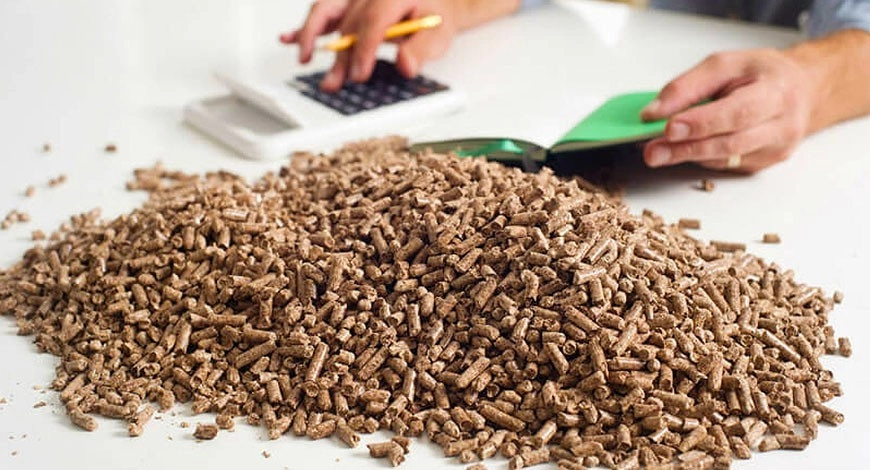
The Popularity Of Wood Pellets, An Opportunity?
First it was steel and lumber; now wood pellets are experiencing an increase in their market value. A recent Argus Biomass Markets study published in June highlights the fact that the cost of wood pellets exceeded $300 per tonne in Europe and America. More than double what it was in December 2021, less than six months earlier!
What’s the reason for this increase in the price of wood pellets? And what are the dust collection stakes associated with this industry?
Wood Pellets Are On A Roll!
By putting pressure on biomass producers, the following four factors are creating significant demand for wood pellets.
1. The Global Energy Crisis
The energy shortage is one of the things caused by the strong economic recovery in 2021 and Russia’s invasion of Ukraine. This crisis is acting as an incentive to find alternatives, especially to oil; hence the strong interest in biomass and wood pellets. And when demand increases, prices follow!
2. Climate Change
Countries and industries must adapt to new realities that are prompting them to choose cleaner energy sources. Since biomass is carbon neutral, it can help them achieve their objectives of reducing air emissions.
3. Programs Promoting the Reduction of Greenhouse Gases (GHGs)
Along the same lines, a number of government or private authorities offer subsidies to facilitate the energy transition. These help reduce the energy-related budget envelope in the event of plant renovations or construction. The result? Lower CAPEX and a better return on investment.
4. The Carbon Market
Since companies are limited in their GHG emission rate, those that opt for biomass can then sell their unused credits to other organizations that might exceed their quota. A further incentive!
Previously, one of the major hurdles to producing pellets was transportation: shipping the raw materials to the plant, and then handling the finished product, often to send it to Europe (one of the main biomass markets)… profits were declined rapidly!
With the current momentum, the situation is now, more than ever, conducive to new biomass plants coming into being. So, what should be borne in mind when designing their facilities?
Five Issues Associated With Dust Removal In Wood Pellet Plants
1. The Dust Load
Biomass, often derived from forest residues, creates a considerable volume of fine particles throughout it manufacturing. The challenge? Capturing this dust as soon as possible to prevent it from building up and damaging the plant’s processes.

Therefore, the baghouse dust collector with cyclonic effect is ideal for managing such a load of particles coming from all workstations, usually configured in a continuous stream.
2. The Ligneous Nature Of The Particles
When ground up, bark and wood tend to break down into small filaments that can complicate dust collection. These ligneous particles can clog ducts (forming the same way as spider webs) or even get tangled around filter elements, which adversely affects the effectiveness of the declogging within the dust collector.
3. Moisture In The Material During Primary Crushing
At this first manufacturing stage, the wood residue has not yet been dried. Full of moisture, they are sent by pneumatic conveyor, where the air stream temperature is usually high.
Due to this combination of heat and moisture, the dust going through the dust collector is likely to prematurely clog the baghouses.
4. Fire And Explosion Hazards During Secondary Crushing
After drying, crushing the materials involves a significant fire and deflagration hazard due to the friction itself associated with the process. Proper protection and prevention equipment must be put in place for exhausting the fine wood particles.
5. Material Recovery Using A Screw Conveyor
With an Airex Industries design, the material captured is not lost! With a bi-directional screw conveyor installed under the dust collector’s hopper, the wood dust is recovered and conveyed to the granulation zone.
If embers are detected in the air stream, the screw conveyor reverses direction, and the material is diverted out of the plant to avoid igniting a significant amount of material that could be used in manufacturing wood pellets.
Wood Pellet And Biomass Plants: Airex Is On The Job!
Our teams are proud to have worked on the dust collection and fire and explosion prevention systems of La Granaudière and Granule 777, two of the most recent wood pellet manufacturing plants in Quebec!
In addition to these design, manufacturing and installation experiences, we benefit from the expertise of our sister company, Airex Energy, which produces biocoal pellets. Their plant is another example of our proven expertise!
We are very familiar with the technological requirements and constraints associated with this type of application. Ask us your questions!
